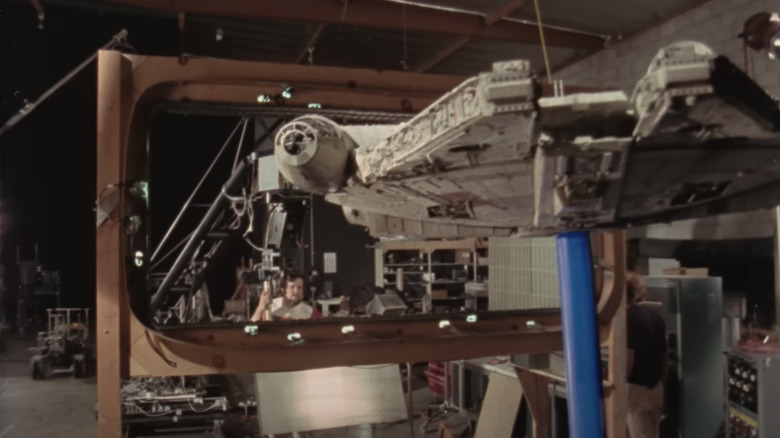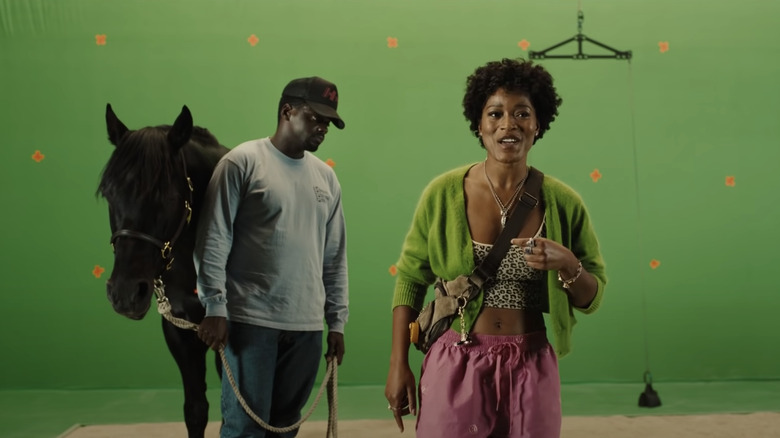Lucasfilm's Executive Vice President Agrees That VFX Artists 'Don't Get The Credit They Deserve' [Exclusive]
Visual effects in movies and TV shows are often taken for granted unless something looks off about them, in which case, it's all too easy to criticize them without even knowing the names of the artists who brought them to life (or the less-than-ideal conditions under which those artists were perhaps working). When we discuss entertainment as viewers, we're usually focused on the end product, what a stage engineer played by Michael Caine might call "The Prestige" part of the magic trick.
Though their efforts might go under-appreciated sometimes, VFX artists are really some of the hardest-working people in show business. The new docuseries "Light & Magic" shines a spotlight on the artists at Industrial Light & Magic, who have been responsible for the effects in many of the greatest films of all time. Lucasfilm executive vice president Lynwen Brennan, who oversees ILM, recently told /Film's Ethan Anderton:
"I think there is absolutely no doubt visual effects artists are incredibly talented, incredibly hard-working, and they don't get the credit they deserve. A lot of that comes from the fact that — I often say that I feel in some ways that the industry, we lean into this idea that it's a magic trick. We lean into this idea that these geniuses behind the scenes just make it happen, and we don't necessarily lean into the individuals and the amount of hard work it takes. It's kind of invisible, right? So I think the more that we can do, like we are doing in a documentary like 'Light and Magic' which really celebrates the people, I think the most we can do to highlight those individuals and the work they put into it and the genius that they have, the more the craft of visual effects will get the recognition it deserves."
The human cost of miracles
ILM's reputation precedes it, but the entertainment industry relies on the hidden toil of plenty of other effects houses and below-the-line crew members. Right now, there's a major movie out in theaters, Jordan Peele's "Nope," that's all about the pursuit of miracles and the human cost of spectacle — how it can lead to exploitation. Over the last year, events like "Rust" cinematographer Halyna Hutchins' death and the narrowly averted IATSE (International Alliance of Theatrical Stage Employees) strike have brought renewed attention to the sometimes-unsafe and exploitative working conditions behind the scenes of film and television productions.
This is not a new issue but rather something that's woven deep into the fabric of Hollywood history, even on family-friendly movies like "Toy Story 2," where the animators were working under such a time crunch that a third of them developed some form of RSI (repetitive stress injury) like carpal tunnel syndrome. In recent weeks, we've also heard VFX artists speaking out against Marvel Studios and its unrealistic VFX demands.
When you come home from your job and sit down to watch something, it's easy to forget that the people who made it were also working long hours and essentially doing so in a freelance capacity. Speaking from personal experience, being a freelancer and having the hand that feeds you impose irrational deadlines doesn't always lead to the best work. Studios might be chasing spectacle but they're also chasing a buck, trying to turn a profit as they pump out content for viewers to consume.
Next time you see questionable visual effects onscreen, just remember that it may not be the artists' fault, and next time you see amazing effects onscreen, just remember that there were people behind those, too. Their names can be found in the credits.

